#1824 - 1904).
Explore tagged Tumblr posts
Text

65 notes
·
View notes
Text

“𝔗𝔥𝔢 𝔑𝔦𝔩𝔢 𝔦𝔫 𝔉𝔩𝔬𝔬𝔡, 𝔗𝔥𝔢𝔟𝔢𝔰” 𝔟𝔶 𝔍𝔢𝔞𝔫-𝔏é𝔬𝔫 𝔊é𝔯ô𝔪𝔢 (յՑշկ-յգօկ)
#The Nile in Flood#Thebes#Jean-Léon Gérôme (1824-1904)#Jean-Léon Gérôme#1824-1904#sphinx#details#detail#art#artwork#painting#20th century#xx century#20th century art#1901#illustration
53 notes
·
View notes
Text
"Наполеон в Египте" (1867 - 1868).
Жан-Леон Жером (Франция, 1824 - 1904).

0 notes
Text
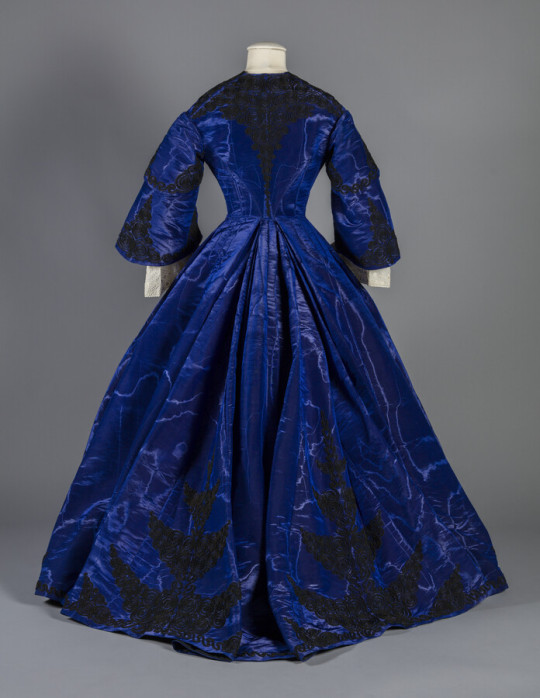
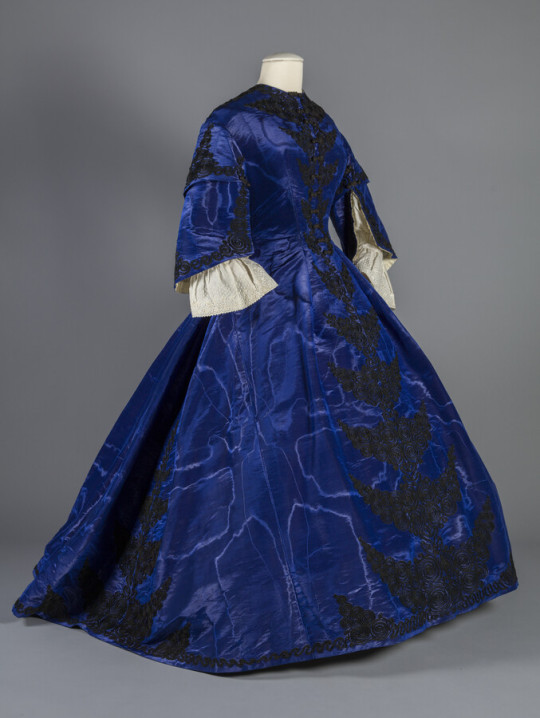
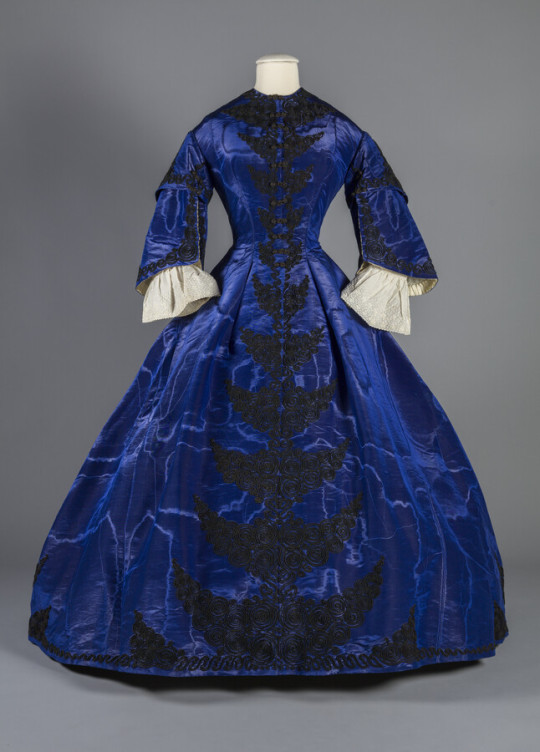
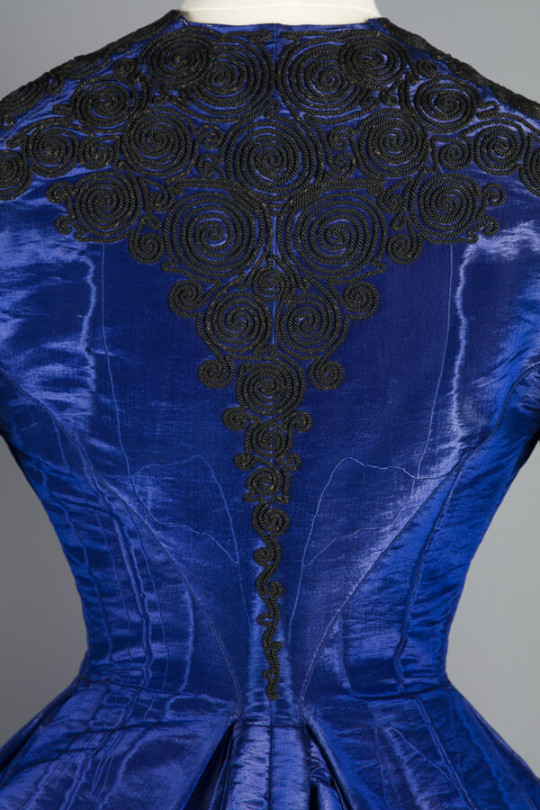
• Dress.
Date: ca. 1868
Medium: Watered silk faille, soutache cording, metal.
~ From the source: Margaretta Sophia Howard Ridgely (1824–1904) likely purchased this royal blue, silk moiré visiting dress during her travels through England and France in 1870. Black soutache cording embellishes the dress, which closes in the front with metal hooks and eyes and black thread-covered wooden buttons. Ridgely's husband, Charles Ridgely (1838–1872), did not survive the trip and passed away in 1872, upon which Margaretta entered mourning, wearing only blacks, greys, and later dull purples. This dress, so eye-catching and vibrant, would have been inappropriate to wear in mourning and was packed away, never to be worn again.
#fashion history#history of fashion#dress#fashion#19th century fashion#19th century#19th century dress#Margaretta Sophia Howard#ca. 1868#mourning
486 notes
·
View notes
Text

The Slave Market
Artist: Jean-Léon Gérôme (French, 1824-1904)
Genre: History Painting
Date Created: 1866
Period: Academic Art
Location: Clark Art Institute, Williamstown, MA
A naked woman at center and man at far right are shown in a public courtyard, as prospective slave owners inspect their bodies. Meticulous details like the figures’ clothing, as well as the style of the surrounding architecture, evoke locales such as Egypt and Turkey, where Gérôme spent several months traveling and sketching. Constructed both from imagination and observation, this dehumanizing scene portrays Islamic society as strange, violent, and depraved. Such paintings appealed to France’s assumptions of its own moral superiority as it expanded its colonial empire across North Africa.
#history painting#19th century art#jean leon gerome#french artist#clark art institute#academic art#egypt#turkey#courtyard#slave#woman#men
238 notes
·
View notes
Text

Jean-Léon Gérôme (French, 1824-1904)
Une femme de Constantinople
79 notes
·
View notes
Text

Lion in the Desert (circa 1885) | Jean-Léon Gérôme (1824-1904)
1K notes
·
View notes
Text

Jean-Léon Gérôme (French, 1824-1904) Pygmalion and Galatea, ca.1890 The Metropolitan Museum of Art
#jean leon gerome#french art#european art#greek mythology#mythological art#pygmalion and galatea#1800s#art#fine art#classical art#europe#european#oil painting#fine arts#europa#france#gerome#galatea#mediterranean
513 notes
·
View notes
Text

Jean-Léon Gérôme (French, 1824-1904), Diogenes
428 notes
·
View notes
Text

25 notes
·
View notes
Text

A part of the Ravengard Family Portrait
Older doodle. Also 2 things of Ulder and Wyll in a row lol. I kinda didn't remember that wyll was 14 when Ulder became a duke but we'll say he has a baby face.
This was a smoosh of three paintings: The Fencing Lesson by Alcide Théophile Robaudi, Kronprinz Friedrich Wilhelm von Preußen by Friedrich Kaulbach (1822-1903) (I think the cite is in German), and a piece by Felipe Gutierrez (Mexican, 1824–1904) that im not using the title of because I didn't realize what it was called until i retraced by steps.
The fencing lesson is for wyll's pose, the piece by Fredrick is for Ulder and the general background of the piece, and the piece by Felipe was for Francesca. That's she's always there even if she passed.
Kinda meh on the red lighting.
#bg3#bg3 fanart#wyll bg3#wyll ravengard#baldur's gate 3#wyll ravengard bg3#blade of frontiers#blade of avernus#ulder bg3#ulder ravengard#Francesca ravengard
40 notes
·
View notes
Text
"Альмея", 1873
Жан-Леон Жером (Франция, 1824–1904)

0 notes
Text

The Execution of Marshal Ney, 1868 by Jean-Leon Gerome (1824-1904), oil on canvas 65,2x104,2 cm
32 notes
·
View notes
Text

Cristiano Banti (Italian 1824-1904)
‘Confidences’ 1868
83 notes
·
View notes
Text



26th June 1824 saw the birth of William Thomson, Lord Kelvin, eminent physicist.
Most people remember William Thomson, or Lord Kelvin as he is universally known nowadays as the man who gave us the Kelvin scale of temperatures but as with most clever people there is a lot more to know about him besides.
Although born in Northern Ireland, William Thomson spent most of his life in Scotland after his father became Professor of Mathematics at Glasgow University. Kelvin attended university classes from the age of 10. He wrote his first scientific paper, under the pseudonym ‘PQR’, aged only 16.
In his teens he learned French well enough to read the work of eminent French mathematician Jean Baptiste Joseph Fourier. Philip Kelland, Professor of Mathematics at Edinburgh University, had criticised Fourier’s work on the theory of heat. Kelvin boldly stated that Kelland was wrong – and later scientists agreed with him.
From 1841 to 1845 Kelvin attended Cambridge University. He was an excellent student ��� although he shocked his father by spending his allowance on a boat. After graduating, Kelvin worked in a Paris laboratory with physics professor Victor Regnault.
Kelvin was influenced by the mathematical ideas of George Green, a self-taught miller’s son from Nottingham. He later brought an essay of Green’s to the attention of fellow mathematicians and physicists by republishing it in a respected scientific journal. Until then the essay on mathematical analysis, electricity and magnetism had gone largely unnoticed.
In 1846, aged only 22, Kelvin returned to Glasgow to become Professor of Natural Philosophy. He remained in this post for an astonishing 53 years. Keen to see students involved in practical experiment, he established what became the first university physics laboratory. Kelvin continued to study the nature of heat. He realised that it would be useful to be able to define extremely low temperatures precisely. In 1848, he proposed an absolute temperature scale, now called ‘the Kelvin scale’.
After further research, Kelvin formulated the second law of thermodynamics. This states that heat will not flow from a colder to a hotter body.
His interest in the transmission of electricity prompted Kelvin’s appointment as Director of the Atlantic Telegraph Company in 1856. The company was to install a telegraph cable under the Atlantic Ocean. Atlantic Cable Expeditions in 1857, 1858 and 1865 failed, but communication by cable finally succeeded in 1866.
From 1870 onwards, Kelvin spent many summers on his yacht 'Lalla Rookh’, and invented several marine instruments to improve navigation and safety.
He introduced a mariner’s compass more accurate than any other in existence, and a machine to predict tide levels worldwide.
In 1884 Kelvin travelled to the United States to give a series of lectures. These were enthusiastically received, and were published in 1904 as the 'Baltimore Lectures’.
Kelvin became a Lord in 1892 and took the name Kelvin because of his Glasgow connections. By the time of his death in 1907, he was an international celebrity, widely respected and honoured.
The statue in the pics is in Kelvingrove Park, Glasgow.
20 notes
·
View notes
Text
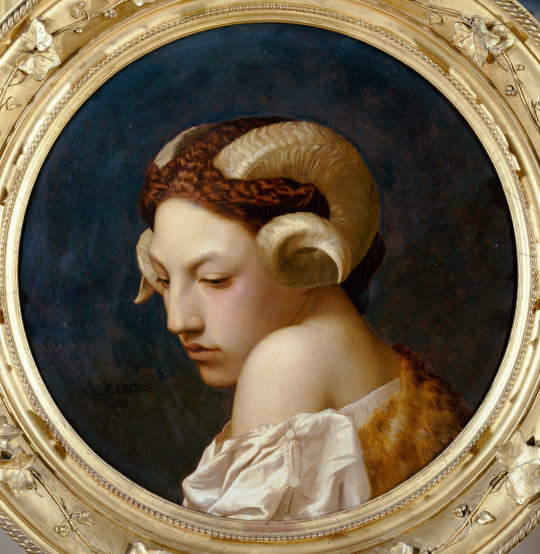
Jean-Léon Gérôme (French, 1824-1904)
Tête de femme coiffée de cornes de bélier
298 notes
·
View notes